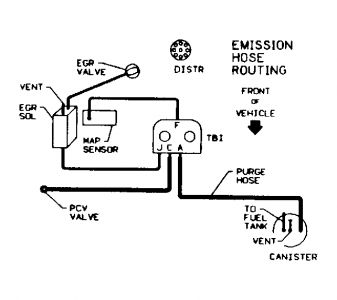
This is how the MAP sensor work and when the ECM depend on it
Manifold Absolute Pressure (MAP) Sensor
The MAP sensor is a variable resistor which measures the changes in the intake manifold pressure which result from engine load and speed changes.
The pressure measured by the MAP sensor is the difference between barometric pressure (atmospheric air) and manifold pressure (vacuum).
A closed throttle condition (engine coast down) would produce a low MAP reading while a wide open throttle condition (engine acceleration) would produce a high MAP reading.
The high value is produced because the pressure inside the intake manifold (vacuum) is the same as the pressure outside the manifold (atmospheric air).
The ECM supplies a 5-volt reference signal to the MAP sensor.
As MAP changes, the electrical resistance of the sensor also changes.
By monitoring sensor output voltage, the ECM is informed of intake manifold pressure.
A higher pressure (high voltage) requires more fuel, while a lower pressure (low voltage) requires less fuel.
SO ,When the engine is running above 400 RPM, the ECM operates in the open loop mode.
In open loop, the ECM calculates injector pulse width based upon coolant temperature and manifold absolute pressure.
The engine will remain in open loop operation until the oxygen sensor reaches operating temperature, the coolant temperature reaches a preset temperature, and a specific period of time has elapsed after the engine starts. When all these conditions are met, the ECM operates in the closed loop mode. In closed loop, the ECM controls injector pulse width based upon oxygen sensor signals to maintain the air/fuel mixture ratio
Monday, December 28th, 2009 AT 9:34 PM



